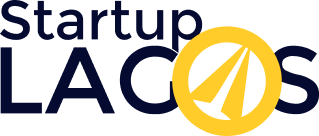By Nkeiruka Ifeonu
Tech Is Changing the Game, Are You Ready?
Every few months, a new wave of smart AI tools emerges, promising to revolutionize how we work and interact. In the design space, intelligent platforms like Figma's smart layout suggestions, Adobe's generative capabilities, ChatGPT, Claude AI, and Uizard are streamlining UX layouts, automating mundane tasks, and even allowing us to create full prototypes with minimal effort.
Given the rapid pace of technological advancement, it's no surprise that many designers are worried about job security, asking, "Will these tools replace me?"
The short answer is: No! The real truth, however, is that while AI tools aren't set to take your job, designers who effectively harness these tools certainly will.
The Evolution of Design
Design has always evolved alongside new technologies.
Back in the early 2000s, tools like Photoshop and Illustrator transformed digital design. In the 2010s, platforms such as Figma and Sketch made collaboration smoother than ever. Now, in the 2020s, automation is taking center stage, streamlining workflows and tackling the tedious tasks we'd rather avoid.
Every time a new technology enters the arena, there's a tinge of panic. Yet, history shows that designers who embrace innovation and learn new tools are the ones who thrive.
What AI Tools Can Do in Design Today
This latest wave of design technologies is impressive and transformative. Here's how AI tools are reshaping our workflows:
1. Generating Design Layouts in Seconds: Platforms like Uizard can convert a basic wireframe into a fully styled UI layout almost instantaneously, allowing designers to focus on enhancing user experience rather than getting bogged down in the setup.
2. Automating Tedious Tasks: Tools such as Otter.ai and FirefliesAI can automate the process of writing meeting notes and transcribing sessions, saving us time and streamlining communication.
3. Conducting User Research and Analysis: Some AI solutions analyze vast amounts of user feedback, identify trends, and suggest improvements based on actual user interactions, enabling informed decision-making.
4. Generating Copy and Micro-Interactions: Smart copywriting tools can quickly produce context-appropriate UX copy, helping designers avoid the dreaded blank page syndrome.
5. Improving Accessibility: AI features can automatically check for color contrast, recommend readable font sizes, and even create alt text for images, ensuring our designs are accessible to everyone.
What AI Tools Still Can't Do (And Probably Never Will)
Despite their capabilities, AI tools have limits that human designers can surpass:
• True Creativity & Innovation: While platforms can create numerous design variations, they lack the understanding of why one design resonates with users more than another. Design involves a deep comprehension of human emotions, contexts, and cultural nuances—areas where AI still falters.
• Storytelling & Brand Identity: Every great product has a narrative. Although tech can propose layouts, it cannot craft the emotional bonds that brands build with their users. Designers skilled in storytelling will remain in demand.
• Complex Problem-Solving: Creating meaningful user experiences requires more than aesthetics; it involves grasping real-world issues and devising comprehensive solutions. While AI can facilitate processes, human intuition plays a crucial role in making the right decisions.
If your design work revolves around basic UI production or template adherence, these new technologies might disrupt your routine. However, if you position yourself as a designer who:
• Thinks strategically about user experiences,
• Crafts unique, thoughtful designs,
• Collaborates effectively with developers and stakeholders,
• Views AI as a tool for amplifying creativity rather than as a replacement,
Then not only will you survive—you'll thrive and become even more valuable.
How to Stay Ahead of AI Tools
Rather than fearing intelligent tools, the most strategic move is to learn how to leverage them effectively. Here's how:
1. Experiment With New Tools: Familiarize yourself with the latest AI advancements and explore their potential applications in your workflow.
2. Focus on Problem-Solving, Not Just Visuals: Companies are looking for designers who can tackle business challenges. Enhancing your understanding of strategy and user research will increase your importance.
3. Develop Essential Human Skills: Skills such as collaboration, leadership, and storytelling are irreplaceable. The ability to communicate ideas and work effectively with others will enhance your value in the industry.
4. Commit to Lifelong Learning: Technology will continue to evolve. Staying curious and engaging in continuous education will help you stay ahead of the curve.
Final Thoughts
These smart design tools aren't here to take our jobs; they are here to streamline the design process and free us to focus on what truly matters. The critical question isn't whether AI will automate your role, but whether you're cultivating skills that extend beyond what automation can achieve.
As we look toward the future, it's clear that the landscape of design will be shaped not just by the tools we use, but by the designers who adapt and innovate in the face of change. Embracing AI in our design processes is less about replacing human creativity and intuition and more about enhancing our capabilities.
The designers who will thrive in this new era will be those who can integrate AI tools into their workflows, using them as extensions of their creative capabilities rather than viewing them as threats. By combining the efficiency of AI with the inherent creativity and emotional intelligence that only humans possess, designers can forge new paths and unleash innovative possibilities.
Embrace the Future of Design
So, rather than worrying about the rise of AI, let's harness its potential to redefine the design landscape. Embrace these tools, not as replacements for our artistry but as assets that can inform, inspire, and enhance our work.
Let's evolve with technology—staying curious, adaptable, and relentless in our pursuit of creativity. The future of design is indeed bright, and with the right approach, we can ensure that it remains a canvas for human creativity and innovation.
About the Author
Nkeiruka Ifeonu is a product designer, community builder, and award-winning industry leader with seven years of experience shaping the future of design. With a background in marketing, PR, and UX, she has led projects at OneHealthNG, Celebrationdom Corporation, and Jump n Pass, improving experiences for over 100,000 users.
Recognized as a Global Tech Hero and Chapter Lead for Untitled Designers Lagos, Nkeiruka is passionate about mentorship, innovation, and empowering women in tech. Her insights into the evolving landscape of design make her a thought leader in understanding the intersection of technology and creativity.
Play audio
Comments
Add your comment
Categories
Startup Raises
262
Feature
83
Fintech
39
Fresh News
696
How To
84
Acquisition
39
Reports
22
Opinion
57
Recent Posts
Meet the Founder Who Turned Down $1.5 Million and Built One of Africa’s Fastest-Growing Companies Two Years in a Row
Most startups pursue large funding rounds to accel...
FG Targets 35 Million Disabled Nigerians in Digital Inclusion Drive
The Nigerian Federal Government has made a promisi...
How Banks and Fintechs Determine Creditworthiness
Banks and fintech companies in Nigeria are adoptin...
Metrospeed and Chevron Partner to Drive Lagos Metro Smart City Development
Metrospeed Property Development Limited has announ...
Beware: Tria Stealer malware is targeting Android users’ WhatsApp and banking apps
There has been an alarming rise in sophisticated c...
Related Post
Why Most Nigerian MSMEs Don’t Survive 5 Years — And What Can Be Done About It
Segun AsegunIn Nigeria, over 80 percent of micro, small, and medium enterprises...
How I Turned AI Into a Teammate, Not Just a Tool — and How You Can, Too
By now, you’re probably using AI to lighten your workload in some way. But are y...
From N200,000 to N2.3 Billion: Amoke Oge's Journey to the Top
In 2023, Amoke Odukoya, founder of the renowned Amoke Oge restaurant, revealed s...








No comments